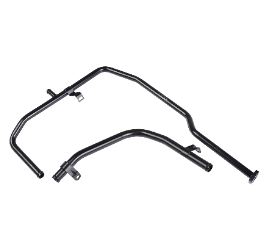The carbon content in carbon steel plays a crucial role in determining the strength, ductility, and corrosion resistance of carbon steel pipelines. Here's how it affects each property:
As the carbon content in steel increases, the strength of the pipeline also increases. Carbon atoms interfere with the movement of dislocations in the steel’s crystal lattice, which makes the material harder and stronger. This is why high-carbon steel is typically used in applications where high strength is required.In low-carbon steel (with less than 0.3% carbon), the strength is lower, but it’s still adequate for many applications, such as pipelines that don't require extreme strength.
Effect:
Higher carbon content results in stronger pipelines, making them suitable for high-pressure or heavy-duty applications.Lower carbon content results in moderate strength, which is often sufficient for general-use pipelines.
As the carbon content increases, the ductility (or the ability of the material to deform under stress without breaking) decreases. High-carbon steel is more brittle, meaning it is less capable of bending or stretching without breaking. This limits the ability to form or weld high-carbon steel without cracking.Low-carbon steel has higher ductility, making it more flexible and easier to work with in terms of bending, forming, or welding. This characteristic is beneficial in applications where pipelines need to be shaped, bent, or exposed to variable stresses.

Higher carbon content decreases ductility, making the steel more prone to cracking under stress.Lower carbon content increases ductility, allowing for more flexibility in forming and welding the pipeline.
Higher carbon content generally decreases corrosion resistance. This is because higher carbon steels tend to have a more reactive surface, making them more susceptible to rust and corrosion, especially in harsh environments like those involving moisture, chemicals, or saltwater.Lower carbon steels have better resistance to corrosion, although carbon steel as a whole is not as corrosion-resistant as stainless steel or other alloys. Additional coatings or linings (like galvanization, epoxy, or paint) are often applied to improve the corrosion resistance of carbon steel pipelines.
Higher carbon content decreases corrosion resistance, requiring more protective measures (e.g., coatings or cathodic protection).Lower carbon content improves corrosion resistance to some degree, though it still requires coatings for enhanced protection.
The balance of carbon content is key when choosing carbon steel pipelines for specific applications. For example, low-carbon steel is commonly used in pipelines that need good ductility and moderate strength, while high-carbon steel is favored for pipelines that require maximum strength but are protected from corrosion by coatings or other methods.

 English
English Español
Español русский
русский












